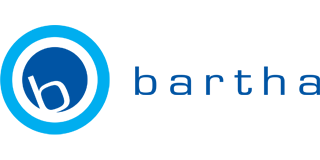“Wow!”
That’s the desired reaction any company or organization wants when its attendees enter the general session space and sees the stage for the first time.
A well-designed set establishes the tone, supports the message and reinforces the brand of both the event and the organization. It needs to hold the audience’s attention and make it easy for them to experience emotion and process information. And it has to be more than a pretty face. Functionality and logistics matter.

Typically, the event logo will be the primary building block for the set. The Bartha graphics team designs a logo for an event to include elements that can be translated into an interesting and appealing set design. Overall, the general session set, while significant, is just one component of the visual experience for attendees. All of the graphic elements – signage, décor, interactive spaces, etc. — should tie together, culminating with the set design as the primary expression of the personality of the event.
Once the graphic foundation has been established, the next considerations for set design include audience size, the size of the room and intensity of message presentation. The design should be right-sized for all of these factors.

Other factors to consider include traffic flow and logistics. Will back stage entrances be needed for speakers? Will large items – cars, furniture, demonstration areas, band set ups, DJ rigs, etc. – need to be revealed or moved on and off stage? Will attendees be coming to stage from the audience in large or small numbers for recognition or other presentations? Will those on stage for recognition remain on stage for photos? How will those being recognized on stage exit the stage?
Obviously, there is no shortage of options when it comes to set design. In addition to using sound, lights and projection, other choices include using LEDs and other specialty lighting – such as intelligent lights or Gobos, additional projection surfaces and projection mapping (to “paint” the set and offer variation), screen surrounds and hard and soft custom scenic elements to complete the look. We’ve built everything from mountainscapes to fully projection-mapped stages and incorporated elements from standard screens to automobiles and custom-built screen surfaces.
Equally obvious is what you will ultimately be able to do will be dictated by the budget. We do hundreds of events of various sizes and budgets each year. A stage designed with a more limited budget can (and should) still be attractive, set the right tone and support the message.

Logistically speaking, you can also plan for cost with a set designed with an efficient set up and strike in mind, which will help reduce on-site complexity and possibly labor costs along with it. You’ll also need to think about the seating arrangement. An audience of 1,000 attendees seated at rounds takes up more space than 1,000 attendees in theater seating and will generally require a larger production footprint, such as additional sound coverage or delay screens. Everyone in attendance should feel connected to the set and the message.
There’s a myriad of details to consider when designing a set to suit your audience, brand, message and budget. A few missteps here and there can negatively affect your budget and the audience’s experience. Fortunately, at Bartha we have an extraordinarily experienced and creative team that has a history of designing sets that are dynamic focal points for any event, regardless of size or budget. From logo development and set design to staging and logistics, Bartha partners with you to navigate the process for maximum results for your business or organization.
Ready to get started? Get some inspiration from our portfolio then contact us here!



